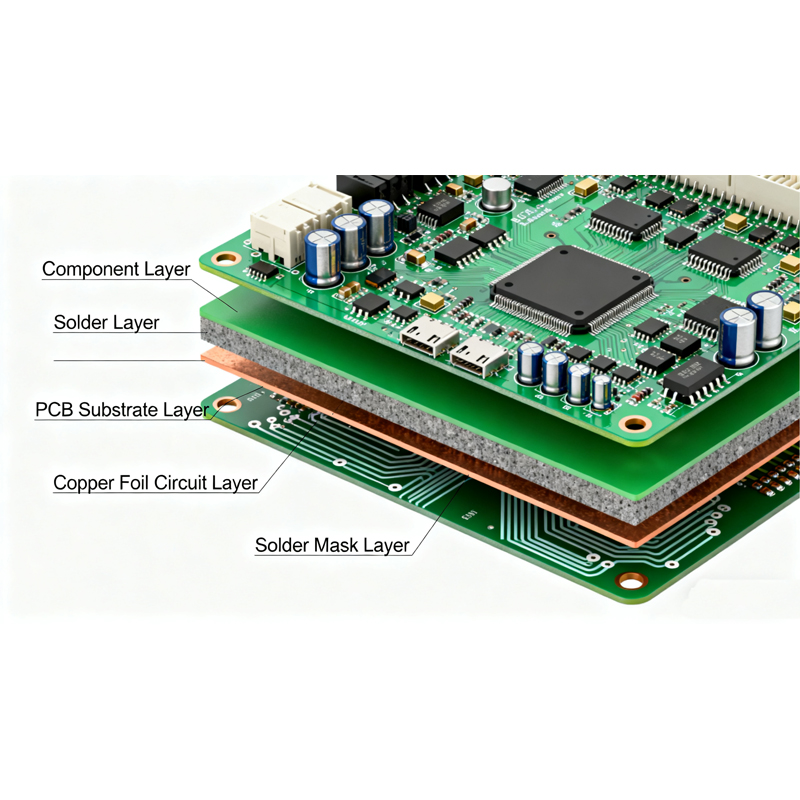Date: 2025-11-05
Let me walk you through how we turn a simple circuit board into something that can actually think and respond. It's like watching a skeleton grow organs and come to life.
Starting Point: The Bare Board - All Dressed Up with Nowhere to Go
When we first make a PCB, it's just an empty platform. Think of it like a new house with all the wiring installed but no appliances or light switches. The board has:
The base material (usually that green fiberglass stuff)
Copper traces (like roads for electricity)
Holes and pads where components will go
But here's the thing - if you plug in this bare board, nothing happens. It's like having a car with no engine - looks nice but won't get you anywhere.
Step 1: Quality Check - Making Sure All the Parts Are Good
Before we start building, we check everything. You wouldn't want a doctor with broken hands doing your surgery, right? Same idea here.
We examine:
The bare boards for scratches or bad copper traces
All components - resistors, chips, sensors - to make sure they're the right type and not damaged
Why? Because one bad part can ruin the whole board
Step 2: Assembly - Putting All the Pieces in Place
This is where the magic starts. We take that empty board and start adding components.
First, we get everything organized:
We load components into tapes for our machines to use
We program our equipment with your board design
Then comes the assembly:
Our pick-and-place machines (think of them as super-precise robots) put tiny components like resistors and chips in exactly the right spots
For larger parts with wires, we either use special machines or have technicians insert them by hand
Now the board has all its parts, but they're not connected yet. It's like having all the car parts laid out but not bolted together.
Step 3: Soldering - Making Everything Stick Together
This is where we make permanent connections. We have two main methods:
For the small surface-mounted parts:
We run the boards through ovens that melt special solder paste
This creates strong electrical connections between components and the board
For the larger parts with wires:
We use wave soldering where boards pass over molten solder
The solder wicks up through the holes to make solid connections
Now electricity can flow between all the components. The board has gone from looking smart to actually being able to move electricity around.
Step 4: Testing - Making Sure Everything Works
Just because it looks good doesn't mean it works right. We put every board through rigorous testing:
Visual inspection:
We check for bad solder joints, missing parts, or components in wrong places
For chips with hidden connections, we use X-rays to see underneath
Functional testing:
We power up the board and see if it does what it's supposed to do
We might simulate real-world conditions - like testing a temperature sensor by actually changing the temperature around it
Repairs:
If we find problems, we fix them - replacing bad components, redoing solder joints
We don't ship anything that doesn't work perfectly
Step 5: The Final Touch - Making It Smart
This is the cool part - we program the brain of the board. For boards with microcontrollers, we load the software that tells them what to do.
For example, we might program a board to:
Read temperature from a sensor
Decide if it's too hot or too cold
Turn on a fan or heater accordingly
Then we clean off any manufacturing residue, package everything carefully, and ship it out.
The Big Picture
What started as a simple board with copper lines becomes something that can:
Sense its environment (through sensors)
Make decisions (through programmed chips)
Control other devices (through relays and outputs)
That empty board has become the smart heart of whatever device it's going into - whether that's a medical monitor, a smart home device, or industrial equipment.
The transformation isn't just about adding parts - it's about creating something that can interact with the world. And that's why what we do is equal parts science and magic.
Kaboer manufacturing PCBs since 2009. Professional technology and high-precision Printed Circuit Boards involved in Medical, IOT, UAV, Aviation, Automotive, Aerospace, Industrial Control, Artificial Intelligence, Consumer Electronics etc..